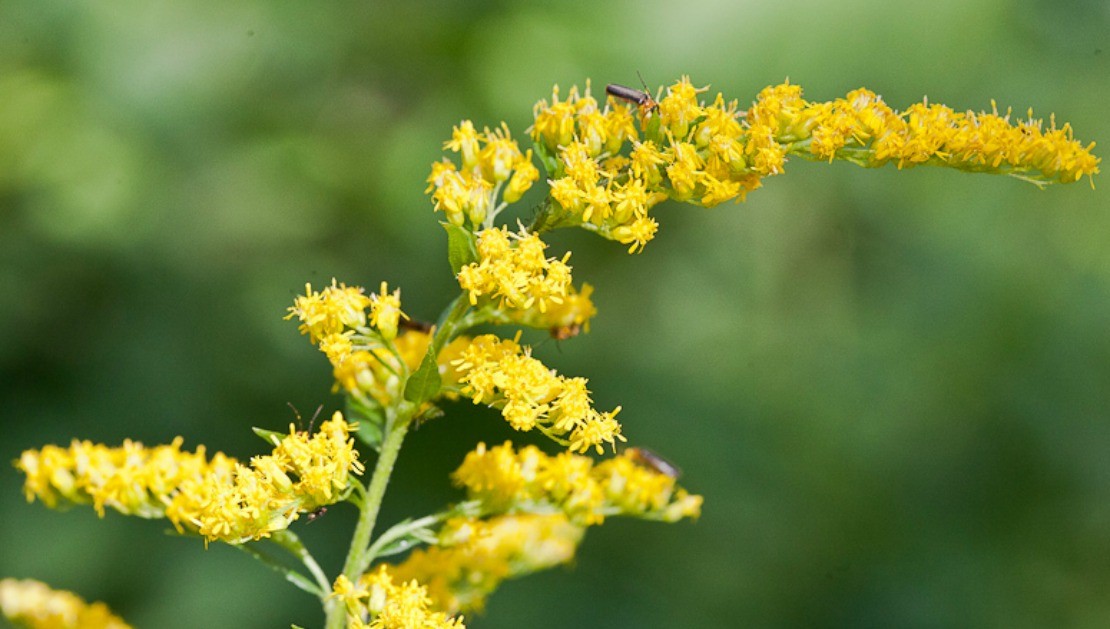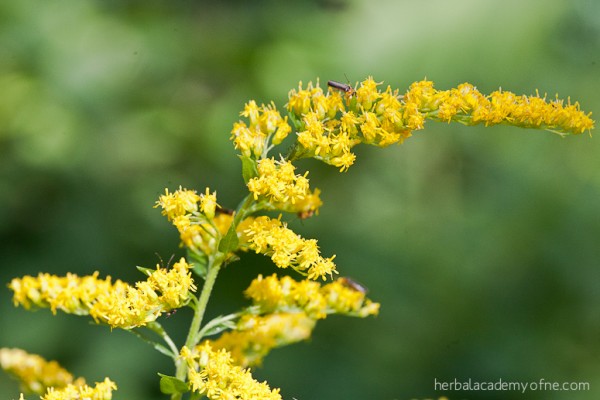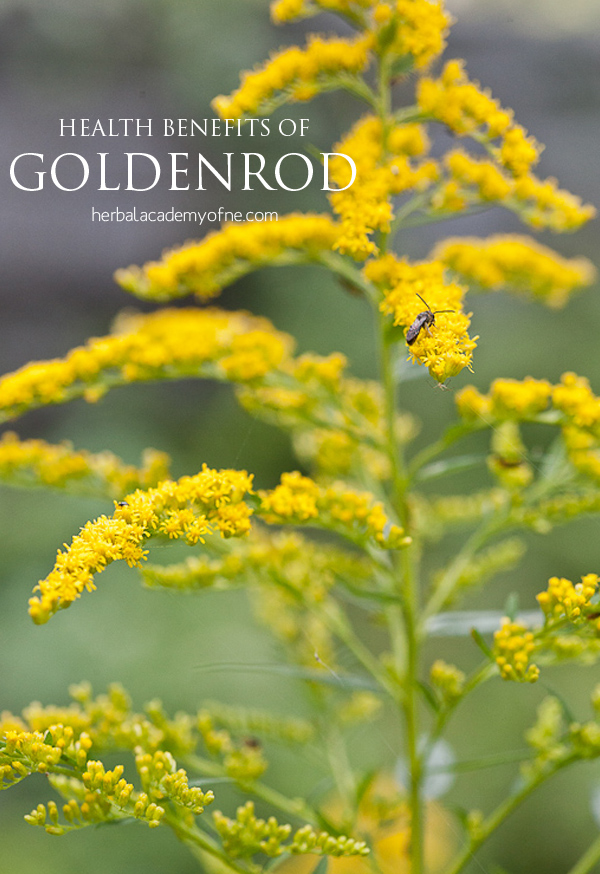
Health Benefits of Goldenrod (+ Tea Recipe)
You know it’s late summer when you see the beautiful and stately goldenrod plant gracing our yards, meadows, and waste spaces. It mixes in so beautifully with Joe-Pye weed, queen Anne’s lace, and loostrife. I am among the many who grew up thinking goldenrod was ragweed (learn about their differences here) and responsible for the late summer and early fall allergies. Sometime ago I learned that this was a myth and only a few years ago I learned how amazing this plant really is, and about all the health benefits of goldenrod.
There’s so much to say about goldenrod that it’s hard to know where to begin. I embarked on a journey to learn about this plant shortly after completing my clinical herbal apprentice program and today it has become an ally and a staple in my home. I enjoy learning about the plants that are all around me and easily accessible, a true believer that Mother Nature gives us what we need.
The Health Benefits of Goldenrod
Goldenrod (Solidago canadenis, S. odora, S. vigaurea, and many others) is part of the Asteraceae (Daisy) family. The pollen is sticky and heavy so it doesn’t float into the air and insects pollinate the plant instead of wind. The properties of goldenrod are similar to many other herbs: antifungal, diuretic, diaphoretic, anti-inflammatory, expectorant, astringent, antiseptic, and carminative. However, the actions of goldenrod to the kidneys, urinary track, skin, allergies, and cardiovascular system are impressive.
The aerial part of the plant is used and is harvested late summer into early fall before the flowers are in full bloom. There are many varieties of goldenrod and although I have not heard or experienced any adverse effects, it’s best to research the plant when in doubt.
Preparations of goldenrod include tea, tincture, infused oils, poultice, and powder. Follow your directions for making these preparations.
Bladder, Urinary Tract, & Kidneys
Goldenrod has a history for use with the bladder and urinary system. The astringent and antiseptic qualities tighten and tone the urinary system and bladder making it useful for UTI infections. The German Commission E has officially approved goldenrod for urinary and bladder inflammations. It is a kidney tropho-restorative (tropho is Greek for nourishing), so it both nourishes and restores balance to the kidneys. According to Peter Homes, it is a good choice for long term use with chronic issues to this area of the body.
The Skin
The Latin name solidago means to make whole. The flowers and the leaves can be infused with oil or used as a poultice for wounds and burns. The infused oil combines well with plantain, yarrow, and St. John’s wort for a nice wound healing skin salve. It also makes a nice rub for tired achey muscles and arthritis pain.

Seasonal Allergies & Colds
Goldenrod often takes the rap for the inconspicuous ragweed plant but goldenrod is actually a nice antidote for seasonal ragweed allergies. Its astringent property calms runny eyes, runny nose, and sneezing that comes with late summer and early fall allergies. I have used goldenrod tincture successfully for my ragweed allergies for two years.
Its antiseptic and antimicrobial properties make this a good choice for sore throats. As an expectorant, goldenrod can expel mucous easily from the lungs. Try it infused with honey or as a tea with honey added. The diaphoretic property of goldenrod helps to open pores of the skin to release sweat during a fever.
Antioxidant
For a period of time in the U.S., goldenrod was known as Blue Mountain Tea. When I first tried making a tea from goldenrod, I was expecting something pungent and challenging in flavor and was delightfully surprised to find it to have an agreeable taste. In any case, it is a good source of the constituent rutin, a powerful flavonoid that benefits the cardiovascular system. Rutin has the ability to support circulation for the cardiovascular system as well as to increase capillary strength. Some say it is higher in anti-oxidants than green tea!
Blue Mountain Tea
This has a slightly bitter astringent value as well as a sweetness. You taste the astringent bitter when it goes down. I prefer goldenrod tea mixed with some mints.
2 cups boiling water
1 Tablespoon of fresh goldenrod or 2-3 teaspoons of dried
1 Tablespoon of mint or 2-3 teaspoons of dried
- Bring water to a boil and combine with herbs.
- Infuse for 15 minutes then strain and serve.
Anti-Fungal
As an antifungal, goldenrod contains saponins and is a useful alternative for Candida type yeast infections.
The flowers are edible and supposedly very good lightly fried. Although I’ve not tried this yet, it’s on my list!
Goldenrod is an abundant plant and there is plenty of it to go around. The meadows and waste spaces are full and good for showing the plant off and there may be some in your backyard ready for harvesting. At least for now it is an underused and under-harvested plant with many wonderful uses and health benefits and just waiting to be your next ally. This is a great time of year to harvest goldenrod (or you can buy it here). I’m heading out for some right now. I hope I’ve talked you into doing the same!
This article was written by Donna Onacki, who has been working with herbs for most of her life and is a Clinical Herbal Apprentice and Certified in Aromatherapy. She has taught many workshops on aromatherapy and enjoys sharing what she knows and has learned with others. Donna is the treasurer for the Herbal Community of Central Massachusetts and is a Financial Recovery Counselor and Coach at Pot of Gold.
REFERENCES
De La Foret, R. (2012, October 13). Goldenrod – a torch of healing. Retrieved August 2014 from http://www.methowvalleyherbs.com/2012/10/goldenrod-torch-of-healing.html
Hoffmann, David. (2002). The herbal goldenrod. In Holistic herbal (p. 203). Hammersmith, London: HarperCollins.








